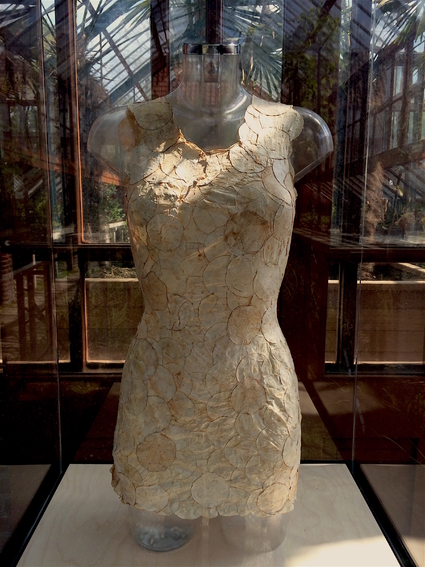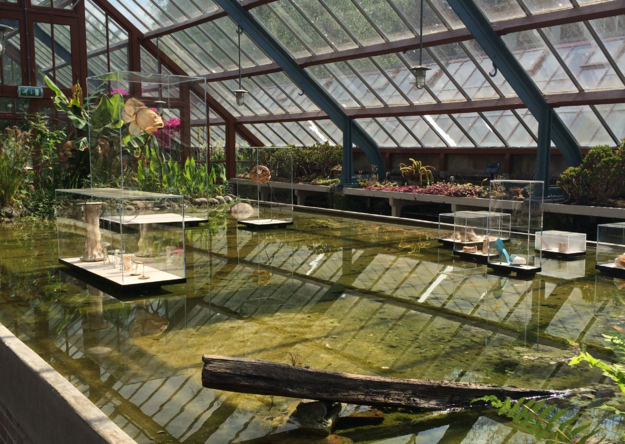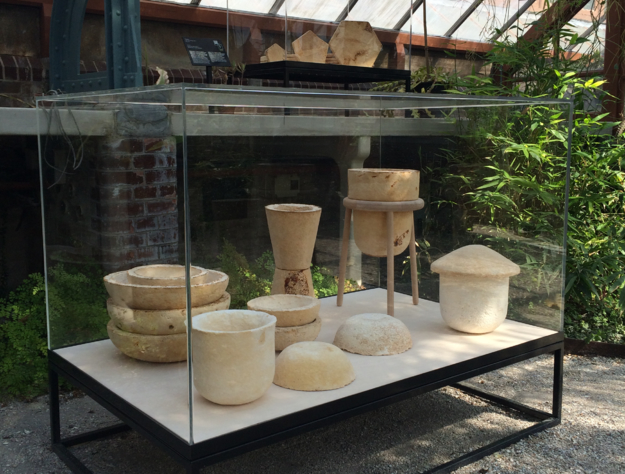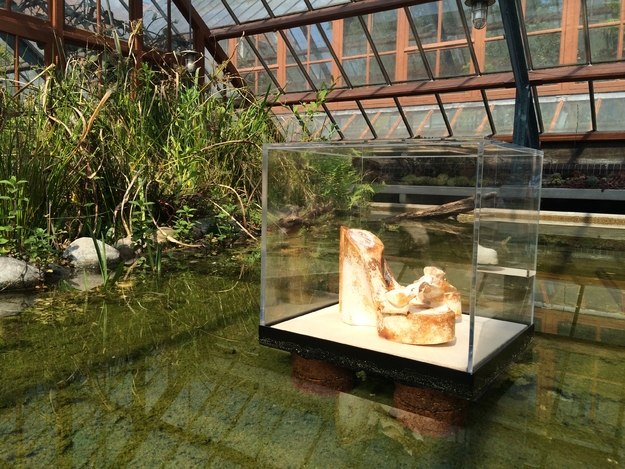Fungal Futures Exhibition
The University of Utrecht displayed 11 of the most current research projects on mycelium and presented them in their beautiful, historic 'Oude Hortus' greenhouse. Only some of the projects are covered here as the website offers a far more extensive description.
The Fungal Futures exhibition presented the work of an international group of artists and designers who develop innovative materials, processes and applications using mycelium, while re-imagining the ways in which our domestic and social life might change and adapt in response over the next century. All of the exhibition pieces were developed as part of the new 'bio-design' research processes that operate at the intersection of design and science.
One of the main aims of the exhibition was to demonstrate how working with natural processes and fungal organisms could contribute towards creating more environmentally sustainable and zero-waste materials. In this way, products were produced that focused on fertilising rather than polluting the planet and creating a closed-loop system.
The glass box displays, surrounded by plants and water give a real apocalyptic feel to the exhibition as we are forced to consider how our every day consumer products impact on the surrounding natural environment. The glass boxes hint at something close but as yet untouchable. Could Mycelium save the planet?
Alternative Waste
Mycelium consists of a dense network of interlocking cells, called hyphae. The fungi can break down plant matter and convert these products while extending its own network of hyphae, and it is the harnessing of this behaviour that can be used to create biomaterials. These materials offer attractive alternatives to traditional synthetics as they are 100% natural, fully compostable, and can be produced from organic waste streams.
For example, Eric Klarenbeek presented the Veiled Lady 2.0, a fully automated production method for 3D printing live mycelium. Here, mycelium is used as a potentially infinite and environmentally friendly living binder, to create and replace products which are currently made out of plastics and wood. The use of 3D printing allows for local production and so there is waste reduction and a lower CO2 footprint.
Another great, revolutionary project was the Fungi Mutuarium, designed by Katharina Unger and Julia Kaisinger. Scientific research has shown that fungi can degrade toxic waste materials like plastic, and convert them into edible fungal materials. Here, this characteristic of mycelium is utilised to provide both a novel fungal food product and relief from plastic waste.
Along the same lines of the Fungi Mutarium, Maurizio Montalti created The Growing Lab. The project tackles oil-based, plastic waste generation and the associated environmental impact by offering an alternative insight into our everyday objects and the materials they consist of. Montalto tangibly demonstrates how toxic plastics could be replaced with natural and bio-degradable mycelium-based matter, with little adaptation.
Fungal Futures Exhibition - Some possibilities of mycelium as a future material.
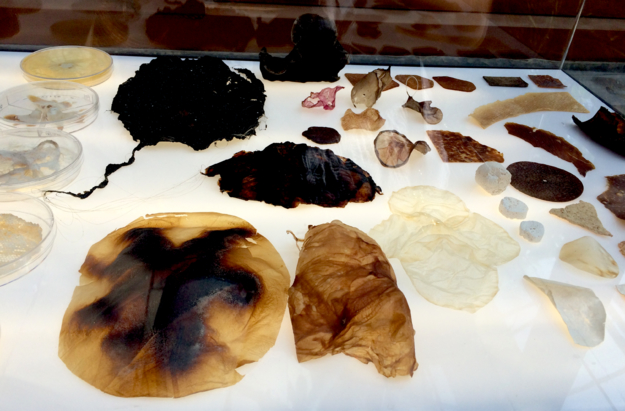
Future Fashions
Another side of the exhibition that was truly inspiring was that relating to fashion. The fashion industry accounts for a huge proportion of global waste - from production of synthetic materials, to landfill, for example. Polyester takes over 200 years to bio-degrade in landfill and with approximately 1 billion items of clothing going to landfill every year in Britain alone, mycelium as a material of the future cannot be ignored.
Using technology and microbiology, Aniela Hoitink presented her work MycoTEX, a dress created from mycelium which stood at the end of a futuristic Catwalk lined with exotic plants. In an effort to change the properties of traditional textile materials, Hoitink began by combining mycelium with textiles, and then creating purely mycelium materials. This change resulted because mycelium could be grown with in-built flexibility, a vital characteristic of fashion fabrics. Repair and replacement of the garment is also easy, tackling the problems of landfill, as the fabric is constructed from individual pieces.
Kristel Peters rethought shoes and explored innovative methods and possibilities for their future manufacture in line with the concept of creating a circular economy. Shoes have a large environmental impact with 21 billion pairs produced every year worldwide and 95% ending up in landfill. Kristel created Growing Shoes to show the shoe as a service, rather than a product. The bio-degradable and natural character of mycelium means that the future of plastic shoes should be quaking in its boots.
